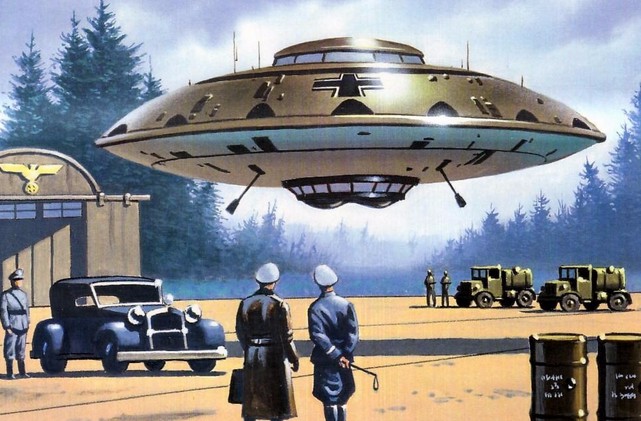
1942-1992 – Half A Century of The German Moon Base
- May 5, 2017
- 0
By Vladimir Terziski
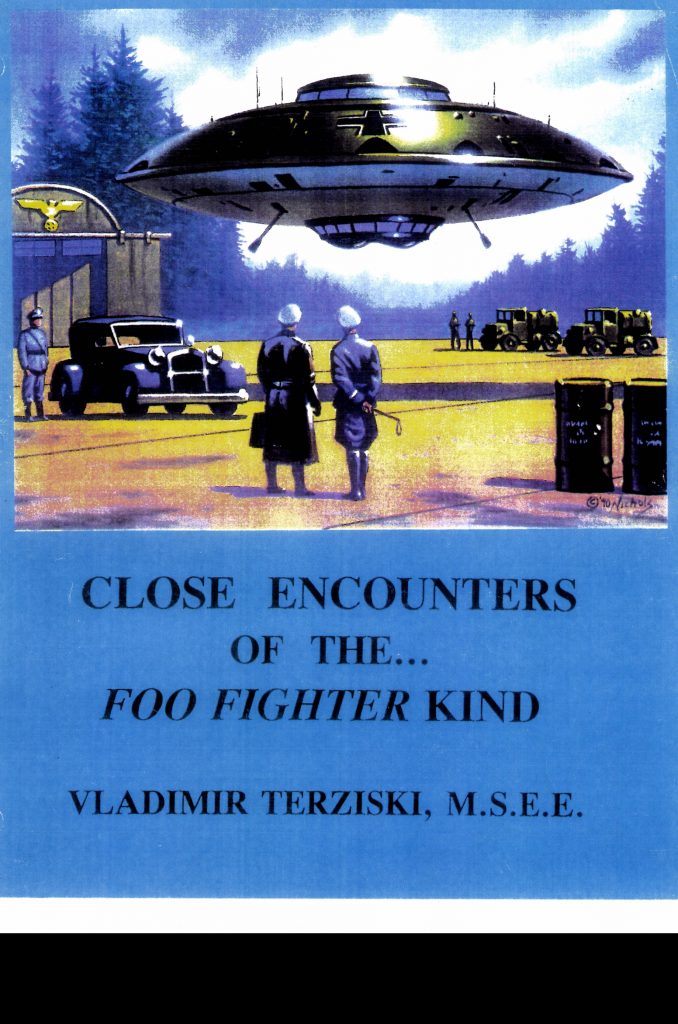
The Germans landed on the Moon as early as probably 1942, utilizing their larger exoatmospheric rocket saucers of the Miethe and Schriever type. The Miethe rocket craft was built in diameters if 15 and 50 meters, and the Schriever Walter turbine powered craft was designed as an interplanetary exploration vehicle. It had a diameter of 60 meters, had 10 stories of crew compartments and stood 45 meters high.
In my extensive research of dissident American theories about the physical conditions on the Moon, I have proved beyond the shadow of a doubt that there is an atmosphere, water and vegetation on the Moon, and that man does not need a space suit to walk on the Moon. A pair of jeans, a pullover and sneakers are just about enough. Everything NASA has told the world about the Moon is a lie and it was done to keep the exclusivity of the club from joinings by the third world countries. All these physical conditions make it a lot more easier to build a Moon base.
Ever since their first day of landing on the Moon, the Germans started boring and tunneling under the surface, and by the end of the war there was a small Nazi research base on the Moon. The free energy tachyon drive craft of the Haunebu-1 and 2 type were used after 1944 to haul people,” materiel and the first robots to the construction site on the Moon. When Russians and Americans secretly landed jointly on the Moon in the early fifties with their own saucers, they spent their first night there as guests of the …. Nazi underground base. In the sixties a massive Russian – American base had been built on the Moon, that now has a population of 40,000 people, as the rumour goes. After the end of the war in May 1945, the Germans continued their space effort from their south polar colony of Neu Schwabenland. I have discovered a photograph of their underground space control centre there.
Japanese Wonder Weaponry created in conjunction with Germany
A Bulgarian researcher, Vladimir Terzinsky, investigated the German-Japanese Space program and its connections with Military technical collaboration. For example, he spoke about the Fieseler Fi-103 (V1) and Dornier Do 335 Pfeil and the Japanese developed Kawanishi Baika suicide pulsejet plane and the Kawanishi J1W1 Shinden interceptor.Foo-Fighters (Feuerball) artifacts
These are remote-controlled spheres which are sent against the enemy with supposed electromagnetic effects in aircraft or simple psychological weapons for frightening enemy pilots. Weapon identified as AEG Kugelwaffen sent to Japan via submarine and long-range aircraft technology transfers. Several of the Kugelwaffen are seen trailing Sally bombers with the gunners making no attempt to shoot them down, suggesting they were being tested. Encountered in the Pacific after Germany surrendered, the 20th and 21st BGs reported these weapons in over 300 sightings.
Disc-shaped or cylindrical air vehicles
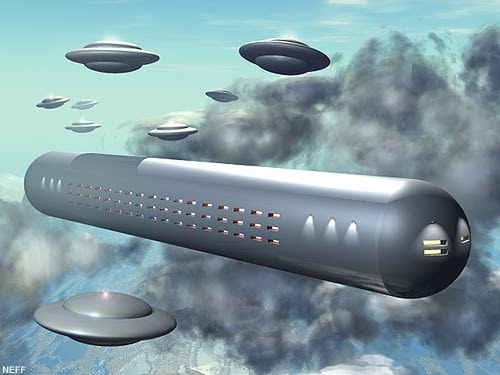 Cylindrical or disc-shaped aircraft with advanced engines that Germany sent to Japan in the last days of the war, again by submarine technology transfer. Type of discs sent supposedly WNF Feuerball type. No Vril or Haunebu Type would fit in any of the German submarines and the Germans were not likely to share any of the occult SS E-IV Technical Branch knowledge as those discs were being moved to South America and Base 211 in Neu Schwabenland, Antarctica from Mar-Apr 1945 for continued postwar development.
Cylindrical or disc-shaped aircraft with advanced engines that Germany sent to Japan in the last days of the war, again by submarine technology transfer. Type of discs sent supposedly WNF Feuerball type. No Vril or Haunebu Type would fit in any of the German submarines and the Germans were not likely to share any of the occult SS E-IV Technical Branch knowledge as those discs were being moved to South America and Base 211 in Neu Schwabenland, Antarctica from Mar-Apr 1945 for continued postwar development.
In the Antarctic area there was a supposed technical exchange of Japanese Sub Type I-400/M6A1 Seiran bombers with the Germans for other military technology that they gave to the Japanese.
Base 211 was constructed between 1941-43 in the Muhlig-Hoffman mountains. “Neu-Schwabenland” underground complex with “Neu Berlin” as capital of surviving Reich led by SS General Hans Kammler. There is ample evidence of construction of this base with German surface raiders and U-boats making continuos journeys to the South Atlantic, Argentina’s Tierra del Fuego (Fire Island), and Antarctic waters. The Germans set up meteorological bouys and weather stations from Antarctica all the way up to the Patagonia region of Argentina.
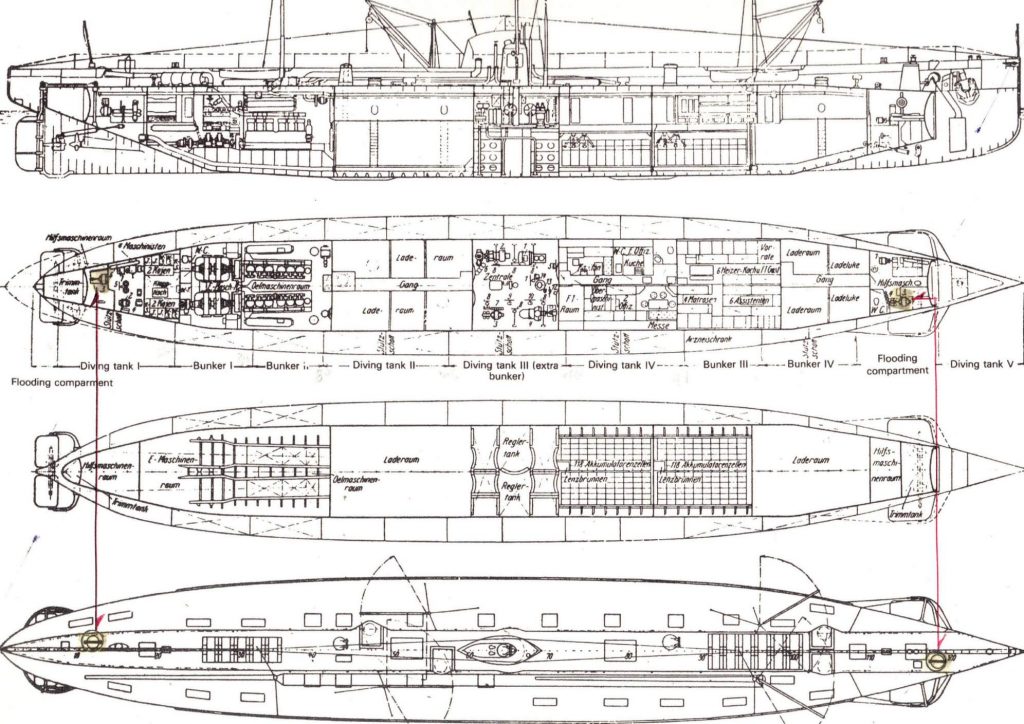 Grosssadmiral Karl Dönitz kept a large number of U-boats in the South Atlantic despite the raging war in the North Atlantic and it was Dönitz who became the second Führer of European Germany, Neu Schwabenland having never surrendered. Both the US and UK established presences in Antarctica during the war and some Germans were captured on the Falkland Islands (Islas Malvinas). Argentina made their Antarctic claim the same year as Base 211 became operational-1943 and aided the Nazis against US and other South American national pressure. In March 1945, the US finally pressured Argentina to declare war on Germany and Japan but to no avail. The Perons sheltered the Nazis and let Odessa ferret war criminals into Argentina postwar. Argentine naval records report unusual disc craft operating off their coast during and after the war, BEFORE the US 1947 UFO sightings began ironically where German weapons were being tested in New Mexico.
Grosssadmiral Karl Dönitz kept a large number of U-boats in the South Atlantic despite the raging war in the North Atlantic and it was Dönitz who became the second Führer of European Germany, Neu Schwabenland having never surrendered. Both the US and UK established presences in Antarctica during the war and some Germans were captured on the Falkland Islands (Islas Malvinas). Argentina made their Antarctic claim the same year as Base 211 became operational-1943 and aided the Nazis against US and other South American national pressure. In March 1945, the US finally pressured Argentina to declare war on Germany and Japan but to no avail. The Perons sheltered the Nazis and let Odessa ferret war criminals into Argentina postwar. Argentine naval records report unusual disc craft operating off their coast during and after the war, BEFORE the US 1947 UFO sightings began ironically where German weapons were being tested in New Mexico.
Sonic, wind and ray weapons
Other strange types of weapons used sounds, used the wind, or shot energy rays, respectively.
They are similar to the Windkanone (Windcannon), Schallkanone (Soundcannon), Donar Kraftstrahlkanone (Power Ray Cannon). Germany supposedly sent many plans over these artifacts, but no information exists indicating that any of these were constructed in the last days of the conflict. However, the Captain of U-977 that surrendered in Argentina months after Germany’s capitulation revealed in his book, U-977 that the Japanese delegations sent to Berlin observed the SS death rays (crude microwave weapons) in 1945.
Japanese-German Space programs
Supposedly, Germany previously and during the war developed a SS space program (Raumflug), which included specialists from the Japanese Army and Navy. No confirmation of this exists.
Joint Programs:
- Japanese-German Lunar Station Alpha-1, the alleged lunar base station constructed by the Nazis in 1943–1945.
- Japanese-German suicide space mission to the planet Mars in April–May 1945, using the Haunebu III space vehicle modified with long range capacity.
With respect to all this, there exist only some references or memories of some Japanese researchers who supposedly worked on some assignments over these technologies, but no real evidence about them exists.
One of these references is about an ancient technician of the Mitsubishi company who remembers a strange cylindrical or spherical artifact acquired from a German submarine in the last days of the conflict. The Japanese armed one of these two examples (very similar to the German “Feuerball” objects) but found it very hard to control. The Japanese were highly superstitious and could not conceive of the type of invisible propulsion system that these objects operated by; subsequently, they were associated with demons and dynamited in a pit after Japan officially surrendered.
Other references about these weapons are the encounter of a Japanese Navy Mitsubishi A6M Zero with a Disc over Genzan (Chosen) and the reports of B-29 pilots in Marianas and Japan of some Spheres of Light (Foo-Fighters) in the last days of the war.
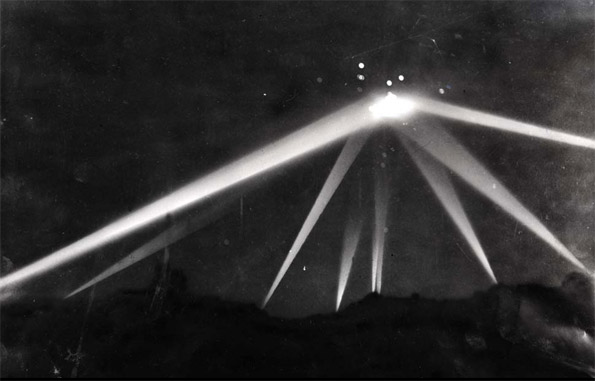 Both Nakajima and Mitsubishi are suspected of having tried to construct purely Japanese discs during the war, exemplified by the 1942 “Battle for L.A.” disc that was fired upon to no effect. Recent analysis of the photos reveals a disc design different than that of the Germans, same for the 1942 sighting of a strange disc over Hopeh Province in China. These supposed Japanese discs had one thing in common- they were quite slow and tended to fly in a straight flight path. German discs by comparison were running off powerful EMG engines capable of speeds of well over 7,000 km/h and were heat-shielded by a metal called Viktalen. Some call this “Frozen Smoke”.
Both Nakajima and Mitsubishi are suspected of having tried to construct purely Japanese discs during the war, exemplified by the 1942 “Battle for L.A.” disc that was fired upon to no effect. Recent analysis of the photos reveals a disc design different than that of the Germans, same for the 1942 sighting of a strange disc over Hopeh Province in China. These supposed Japanese discs had one thing in common- they were quite slow and tended to fly in a straight flight path. German discs by comparison were running off powerful EMG engines capable of speeds of well over 7,000 km/h and were heat-shielded by a metal called Viktalen. Some call this “Frozen Smoke”.
GERMAN-JAPANESE MILITARY R&D CO-OPERATION
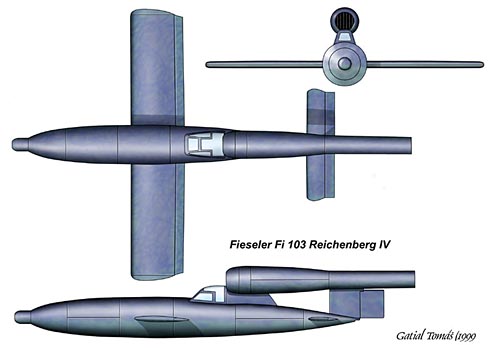 According to Renato Vesco again, Germany was sharing a great deal of the advances in weaponry with their allies the Italians during the war. At the Fiat experimental facility at lake La Garda, a facility that fittingly bore the name of Air Marshall Hermann Göring, the Italians were experimenting with numerous advanced weapons, rockets and airplanes, created in Germany. In a similar fashion, the Germans kept a close contact with the Japanese military establishment and were supplying it with many advanced weapons. I have discovered for example a photo of a copy of the manned version of the V-1 – the Reichenberg – produced in Japan by Mitsubishi. The best fighter in the world – the push-pull twin propeller Domier-335 was duplicated at the Kawashima works. Or a photo of Japanese high ranking Imperial navy officers inspecting the latest German radar station.
According to Renato Vesco again, Germany was sharing a great deal of the advances in weaponry with their allies the Italians during the war. At the Fiat experimental facility at lake La Garda, a facility that fittingly bore the name of Air Marshall Hermann Göring, the Italians were experimenting with numerous advanced weapons, rockets and airplanes, created in Germany. In a similar fashion, the Germans kept a close contact with the Japanese military establishment and were supplying it with many advanced weapons. I have discovered for example a photo of a copy of the manned version of the V-1 – the Reichenberg – produced in Japan by Mitsubishi. The best fighter in the world – the push-pull twin propeller Domier-335 was duplicated at the Kawashima works. Or a photo of Japanese high ranking Imperial navy officers inspecting the latest German radar station.
A Japanese friend of mine in Los Angeles related to me the story of his friend’s father, who worked as technician in an aircraft research bureau in Japan during the war. In July of 1945, two and a half months after the war ended in Germany, a huge German transport submarine brought to Japan the latest of German inventions – two spherical wingless flying devices. The Japanese R&D team put the machines together, following the German instructions, and… there was something very bizarre and other-earthy standing in front of them – a ball shaped flying device without wings or propellers, that nobody knew how it flew. The fuel was added, the start button of this unmanned machine was pressed and it disappeared with a roar and flames without a sign in the sky. The team never saw it again. The engineers were so frightened by the unexpected might of the machine, that they promptly dynamited the second prototype and choose to forget the whole incident.
GERMAN-JAPANESE FLIGHT TO THE MOON AND MARS IN 1945-46
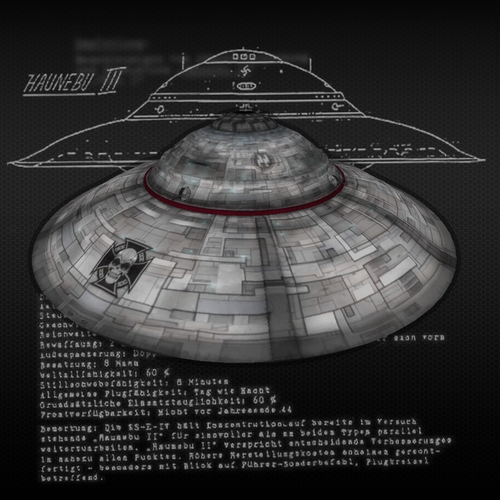 According to the authors of the underground German documentary movie from the Thule society, the only produced craft of the Haunibu-3 type – the 74 meter diameter naval warfare dreadnought – was chosen for the most courageous mission of this whole century – the trip to Mars. The craft was of saucer shape, had the bigger Andromeda tachyon drives, and was armed with four triple gun turrets of large naval caliber (three inverted upside down and attached to the underside of the craft, and the fourth on top of the crew compartments).
According to the authors of the underground German documentary movie from the Thule society, the only produced craft of the Haunibu-3 type – the 74 meter diameter naval warfare dreadnought – was chosen for the most courageous mission of this whole century – the trip to Mars. The craft was of saucer shape, had the bigger Andromeda tachyon drives, and was armed with four triple gun turrets of large naval caliber (three inverted upside down and attached to the underside of the craft, and the fourth on top of the crew compartments).
A volunteer suicide crew of Germans and Japanese was chosen, because everybody knew that this journey was a one-way journey with no retum. The large intensity of the electro-magnetogravitic fields and the inferior quality of the metal alloys used then for the structural elements of the drive, was causing the metal to fatigue and get very brittle only after a few months of work of the drive. The flight to Mars departed from Germany one month before the war ended – in April 1945.
It was probably a large crew, numbering in the hundreds, because of the low level of automation and electronic controls inside the saucer. Most of the systems of the craft had to be operated like these on a U-boat of that time – manually. Because the structurally weakened tachyon drives were not working with full power and not all the time, the trip to Mars took almost 8 months to accomplish. An initial short trust towards Mars was probably used to overcome the strong gravitational field close to Earth, after that the craft was “coasting” for 8 months in an elliptical orbit to Mars with its main drives turned off. Later trips to Mars by the joint Soviet – American craft in 1952 and by the Vatican craft of the Marconi project from Argentina in 1956 reached Mars in only 2 – 3 days, because their drives were working during the whole flight: accelerating in the first half and decelerating in the second. Smaller Kohler converters were probably used to power the systems and life support equipment on board. I do not have any information at the present time about any artificial gravity capability on board the craft, but that could have been easily done with the large antigravity drives of the ship.
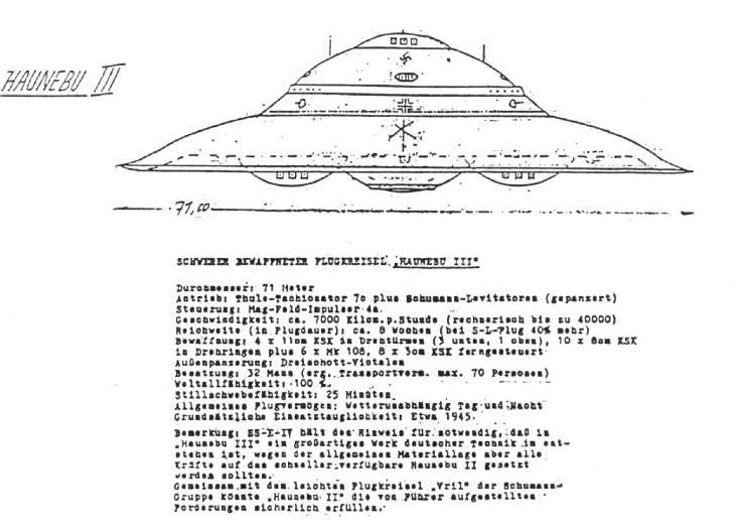 After a heavy, almost crashing landing, the saucer slammed to a stop, damaging irreparably its drives, but saving the crew. That happened in the middle of January 1946. The crash landing on Mars was not only due to the crippled tachyon drives of the craft – it was also due to the smaller gravitational fleld of Mars generating less power for the tachyon drives; and also due to the thinner atmosphere on Mars, that could not be used as effectively for air breaking as the Earth’s atmosphere could. The craft was shaped as a giant saucer – a form that is very efficient as an air brake, when it is entered into the atmosphere with its huge cross section perpendicular to the trajectory of descent.
After a heavy, almost crashing landing, the saucer slammed to a stop, damaging irreparably its drives, but saving the crew. That happened in the middle of January 1946. The crash landing on Mars was not only due to the crippled tachyon drives of the craft – it was also due to the smaller gravitational fleld of Mars generating less power for the tachyon drives; and also due to the thinner atmosphere on Mars, that could not be used as effectively for air breaking as the Earth’s atmosphere could. The craft was shaped as a giant saucer – a form that is very efficient as an air brake, when it is entered into the atmosphere with its huge cross section perpendicular to the trajectory of descent.
One question, that I have not answered yet in the affirmative is how were the Germans able to regenerate the air inside the craft for 8 months for this big crew. Quite probably they were using advanced life support systems, developed initially for their larger Walter turbine and free energy submarines, that were cruising the oceans without resurfacing.
The radio message with the mixed news was received by the German underground space control center in Neu Schwabenland and by their research base on the Moon.



